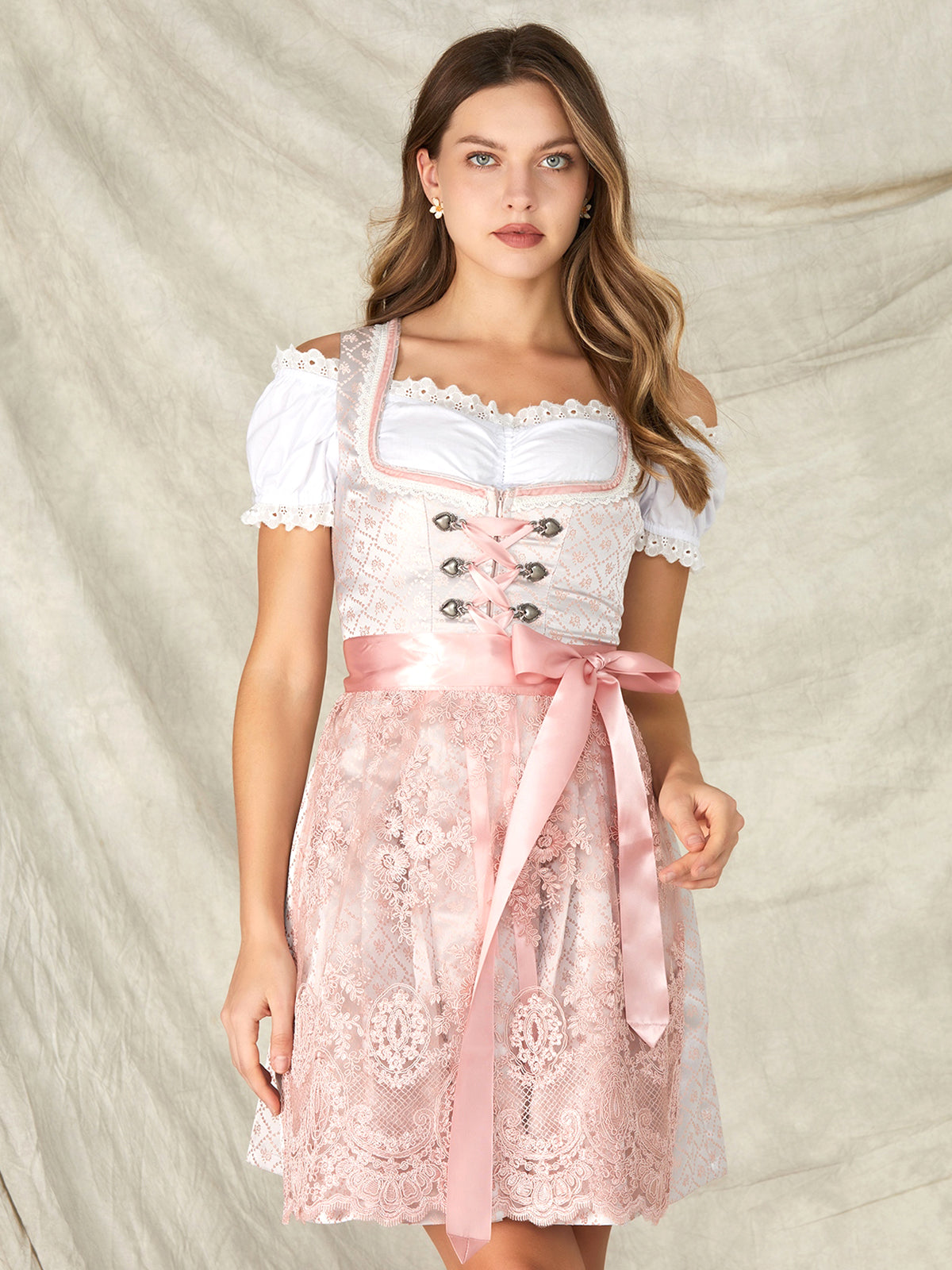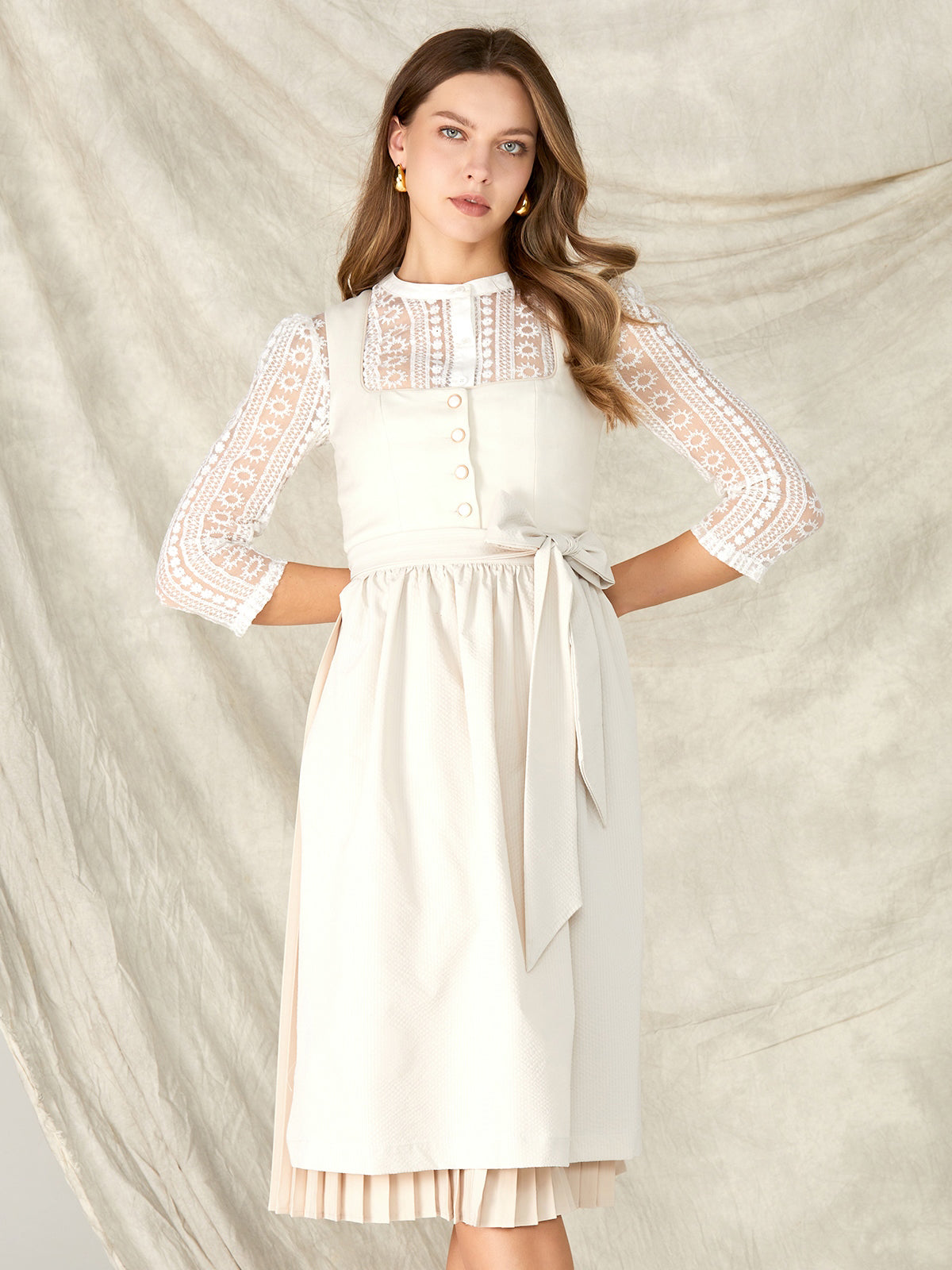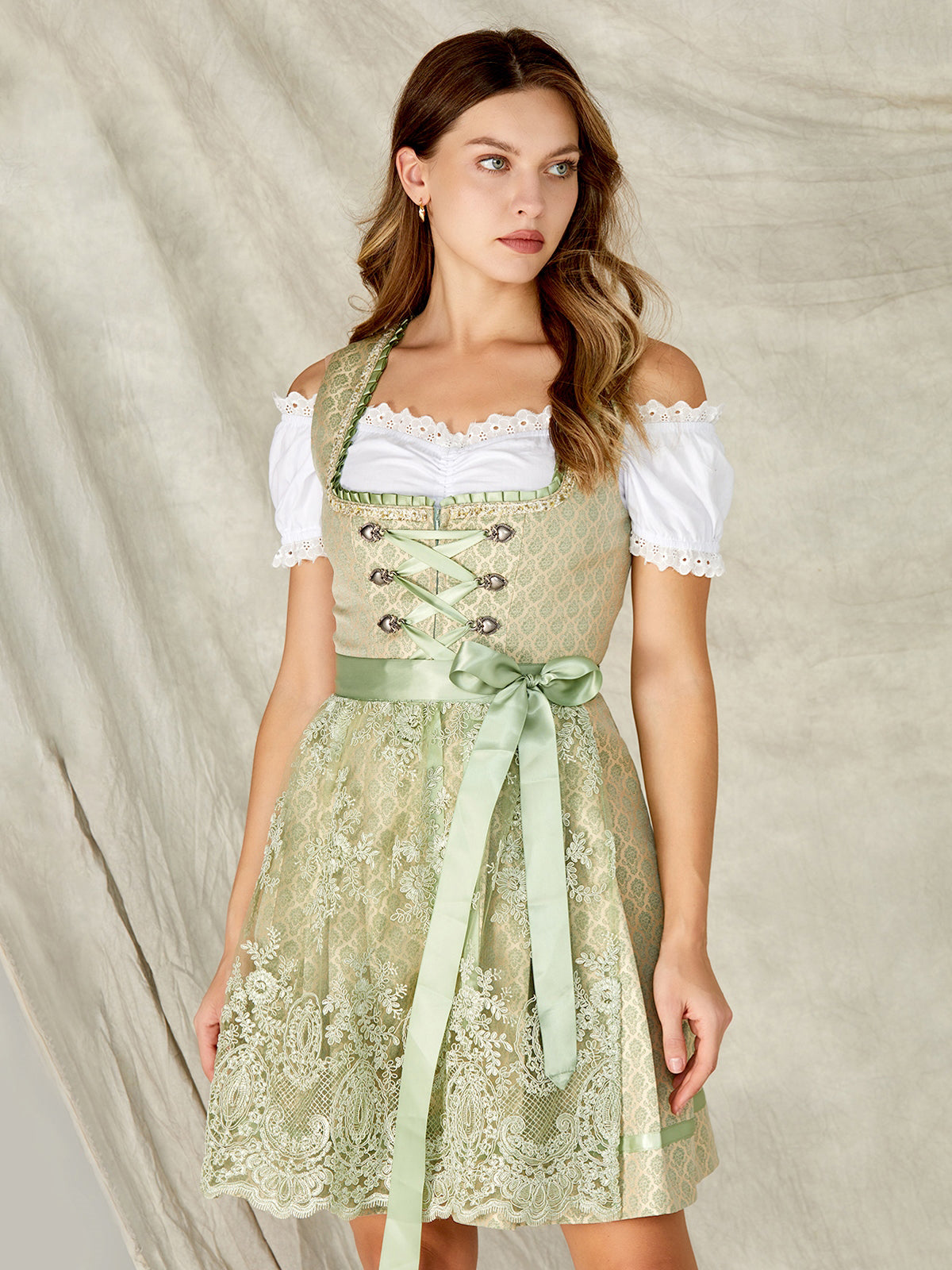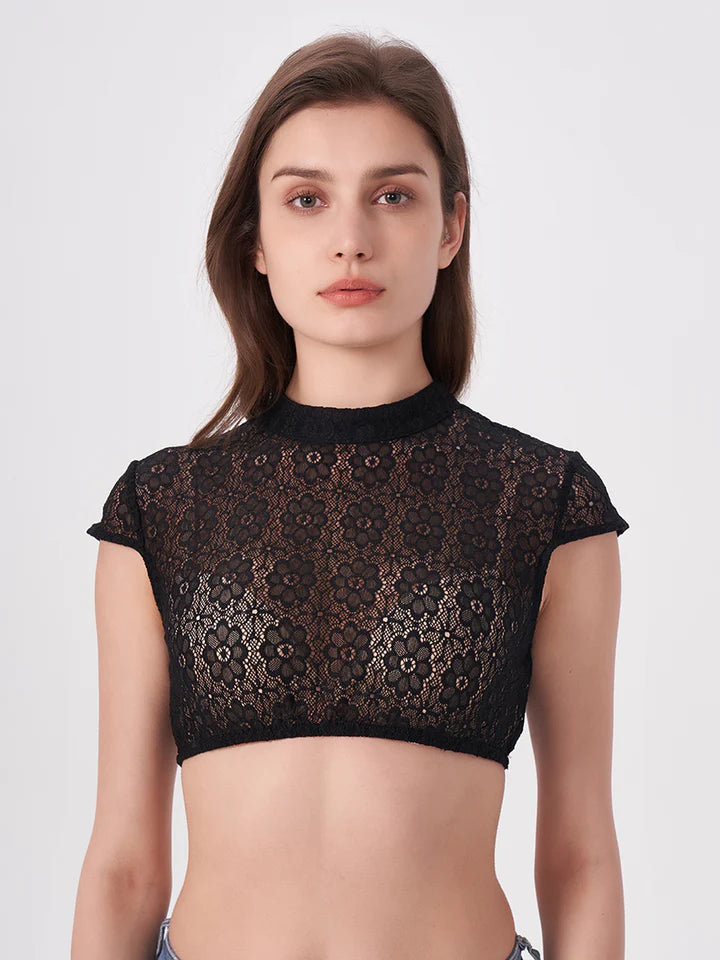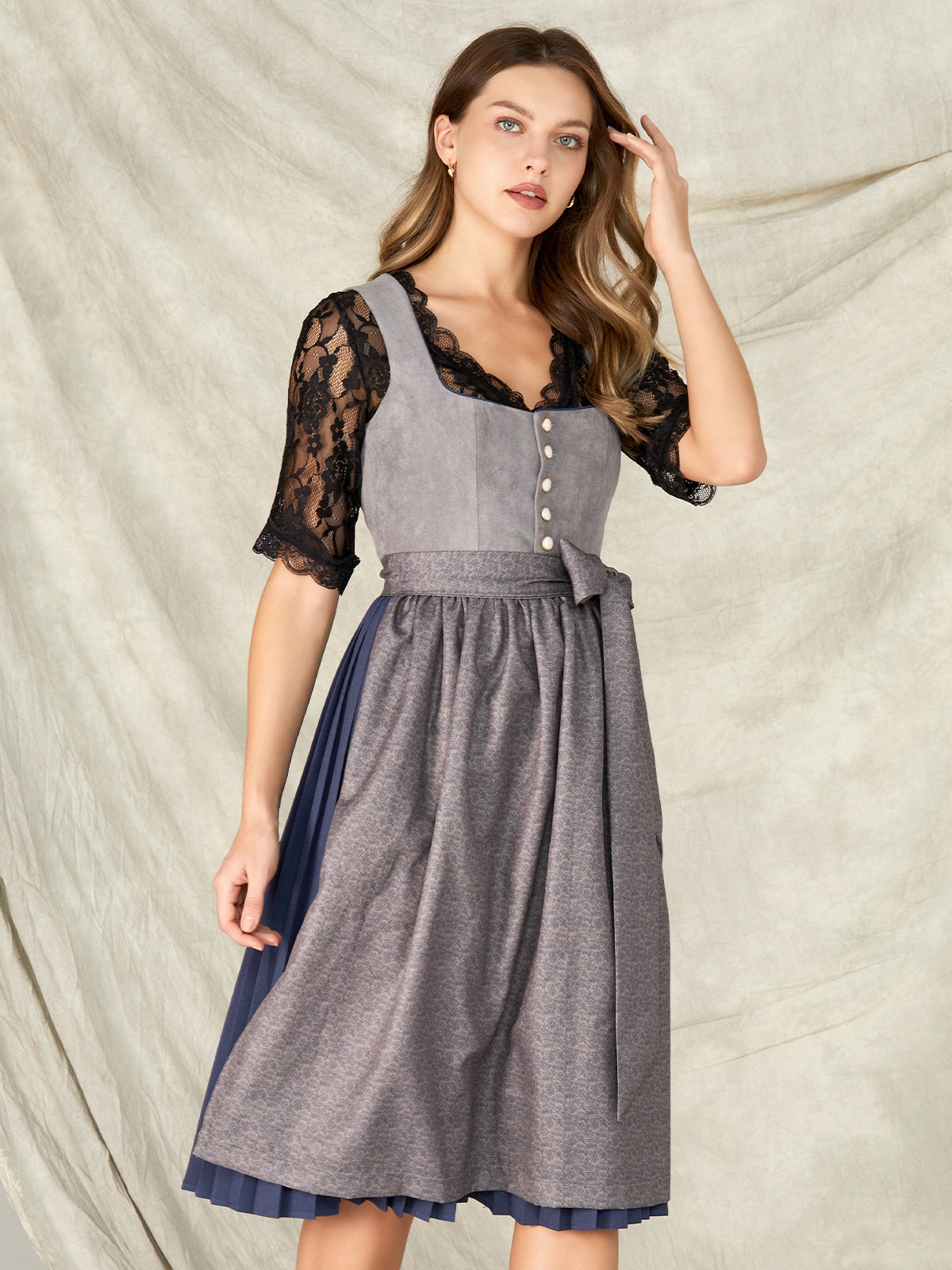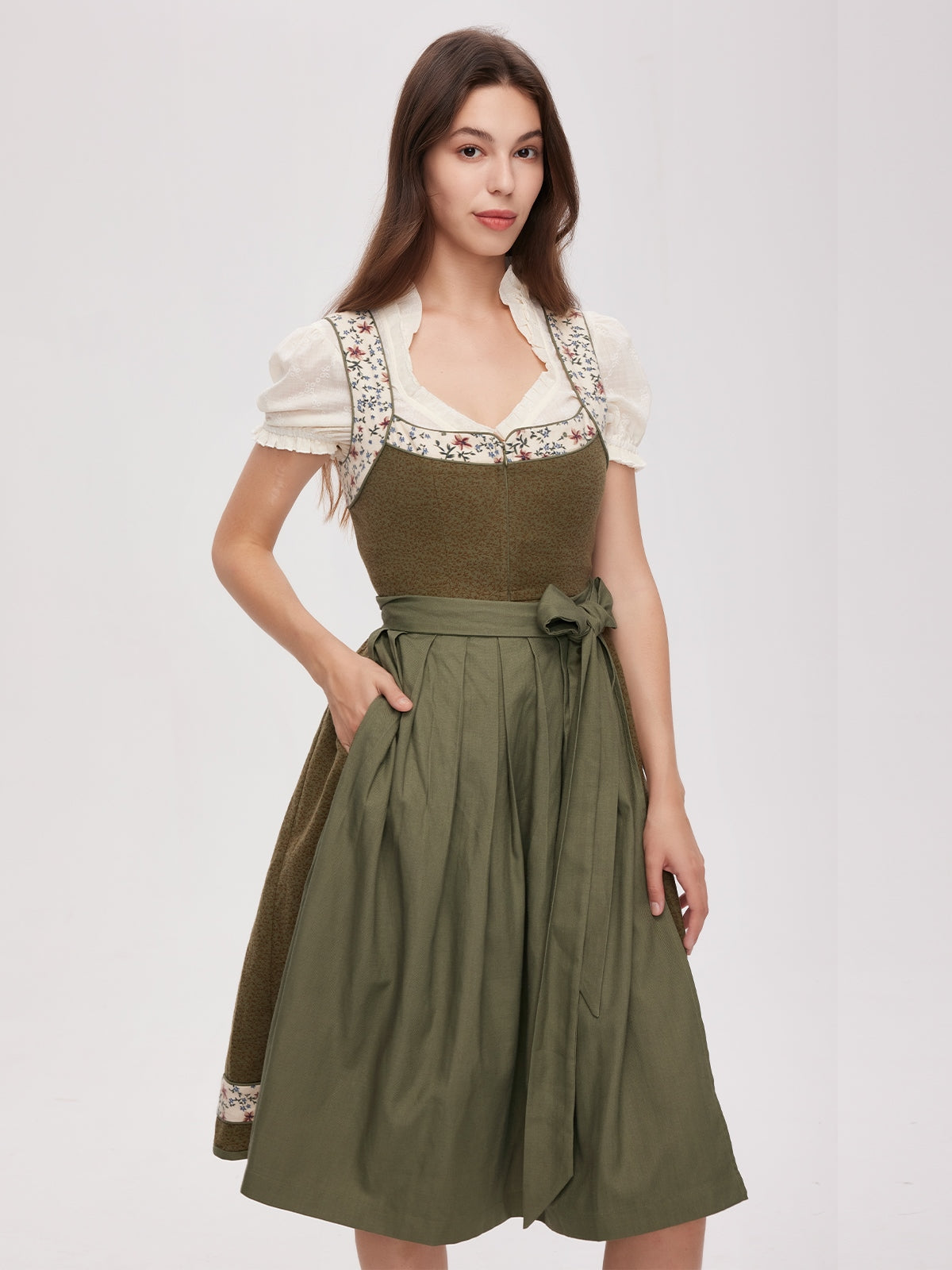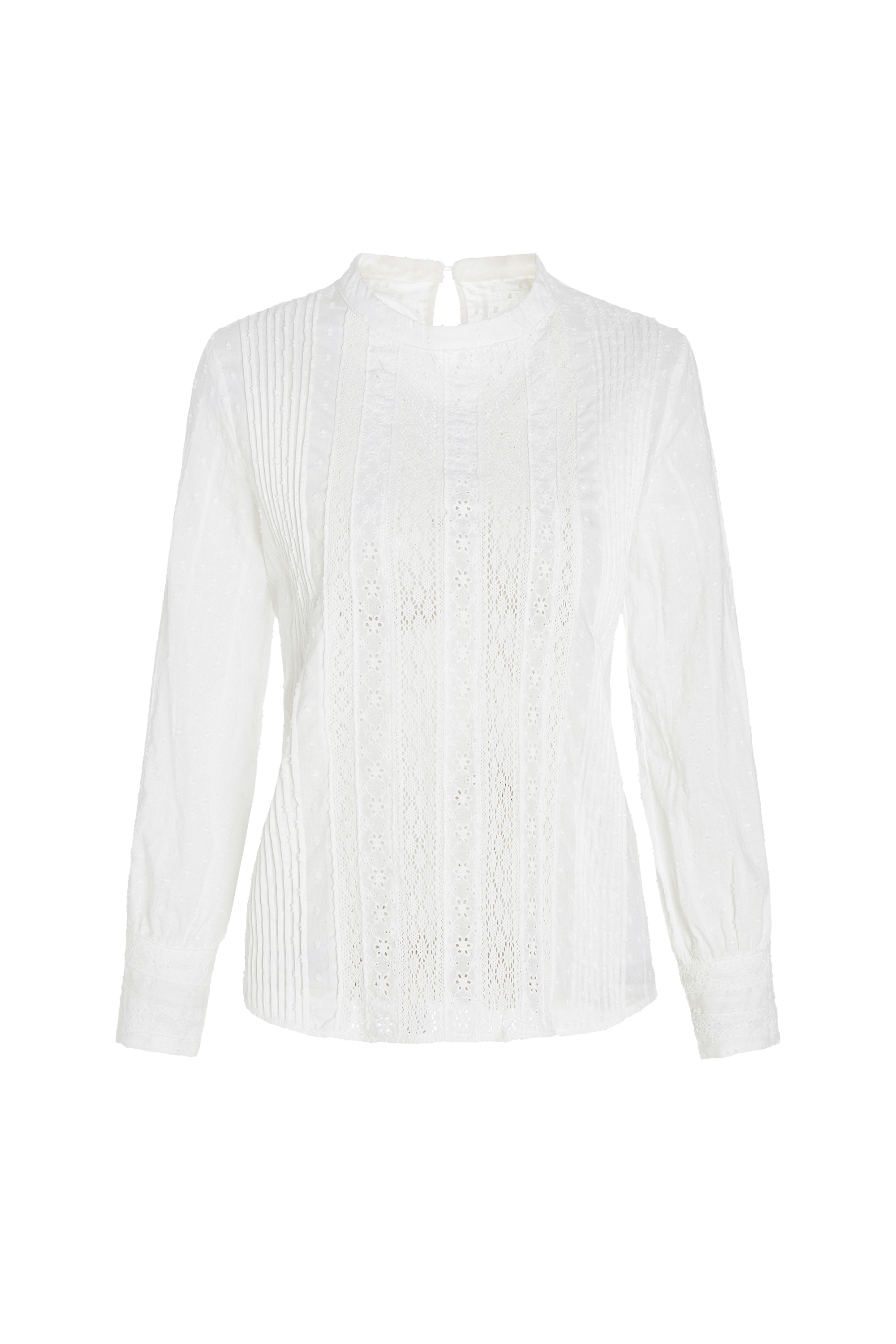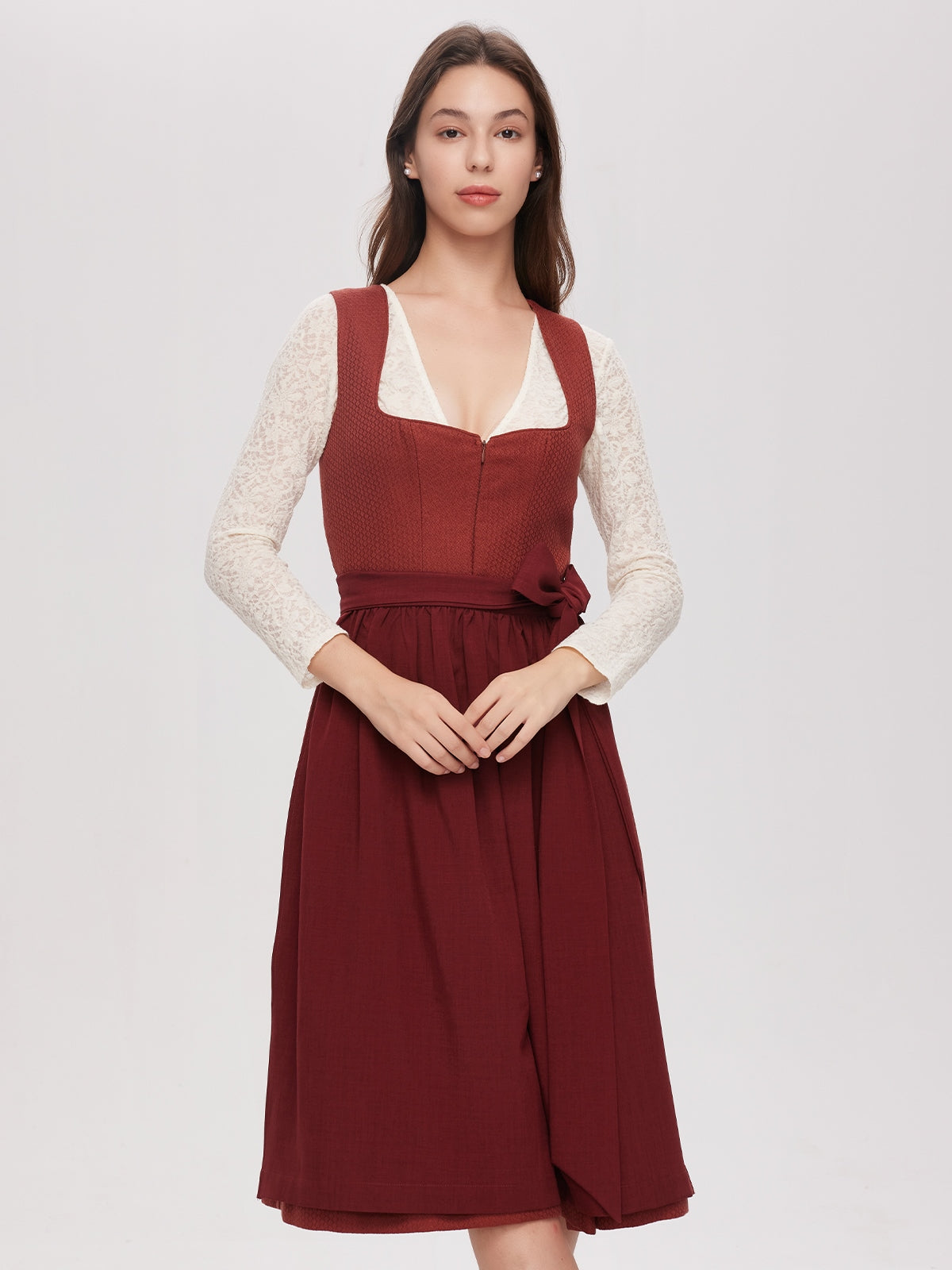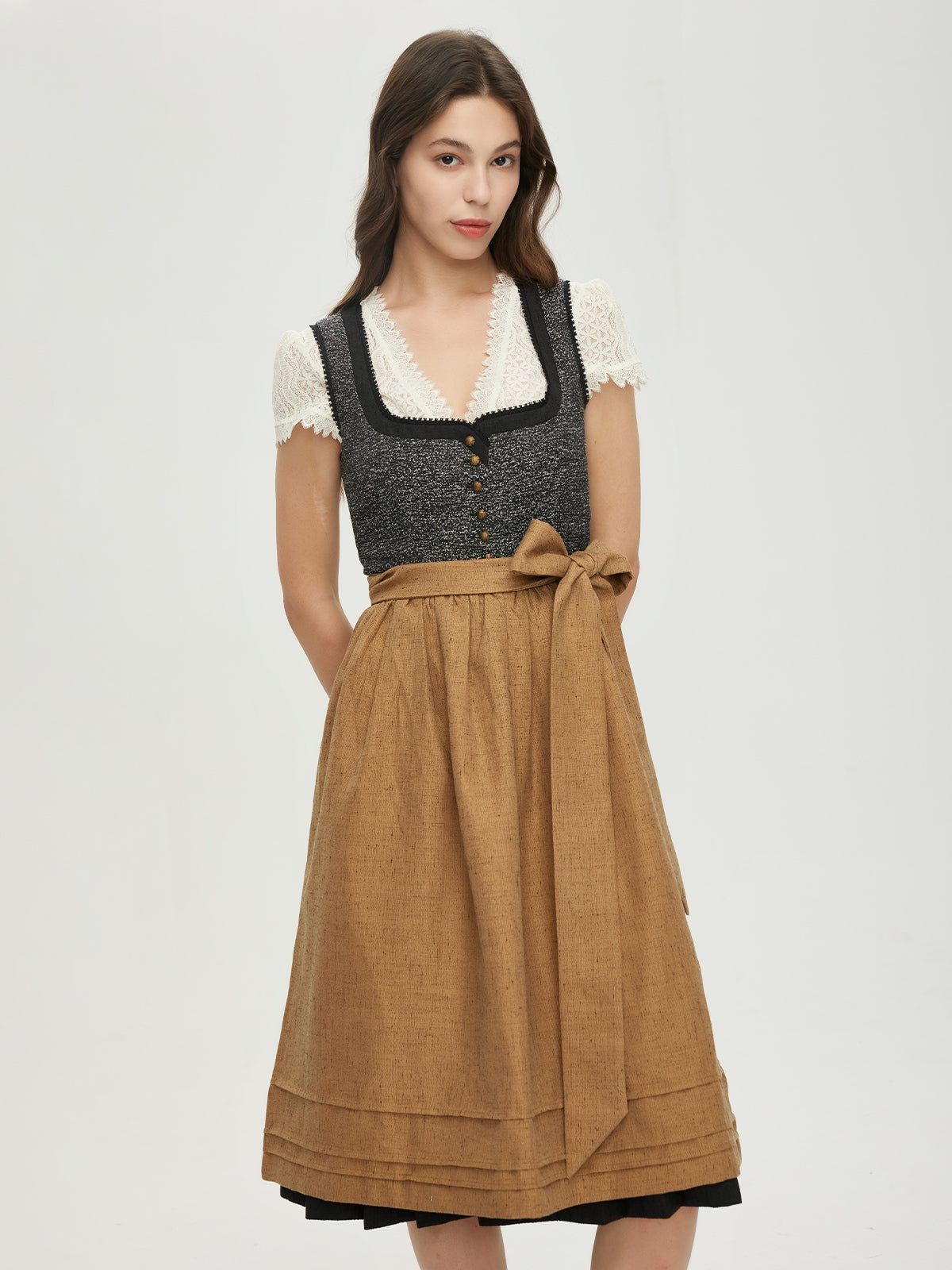Cart
0
The red and black dirndl holds a special significance in traditional costume. It embodies passion, power, and elegance—a combination that appeals to many women. But for some, the dirndl is more than just a garment. It is a symbol of their inner strength and their quest for self-determination. For others, however, the garment can be a mask behind which insecurity and doubt lie.
The personality behind the dirndl
When a woman wears a red and black dirndl , she expresses a very unique attitude. This dress, often with a zipper down the front, not only adds style but also symbolizes openness. But what does this "openness" really mean? For some, the zipper is a symbolic opening to the outside world, a way to demonstrate strength and elegance. For others, it's a kind of armor protecting a fragile soul, behind which fears and insecurities lie hidden.
Contrast between strength and fragility
The dirndl blouse with openwork lace is a special detail that lends the red and black dirndl a soft, romantic touch. Yet these lace details can also be interpreted as a sign of vulnerability—a reminder that behind the powerful appearance, there often lies a sensitive, delicate personality. The blouse symbolizes this conflict. One woman might choose this blouse to show her soft side, while another might wear it to conceal her fragility. These contrasting motifs of the wearers underscore the emotional nuances.
Inner conflicts: The search for identity
Choosing a dirndl with a zippered front and a dirndl blouse with eyelet lace often represents an inner journey. The wearer wrestles not only with fashion choices but also with the need to express herself. She wonders whether she is the strong, independent woman represented by the red and black dirndl, or whether she should embrace her sensitive side. This uncertainty leads to a constant, often agonizing search for identity, in which the dirndl acts as a catalyst.
The contrast between the strong self and the gentle soul
Another important aspect is the role of the blouse. The dirndl blouse with openwork lace features delicate details, symbolizing softness and grace, but also vulnerability. This blouse often contrasts with the dominant effect of the red and black dirndl, whose colors exude a certain authority. The wearer may deliberately choose this contrast to express the different sides of their personality—or they may discover unexpected inner conflicts by wearing it.
The inner struggle for self-image
The combination of the red and black dirndl with a blouse embellished with delicate lace creates a tense contrast that carries a deeper psychological meaning. It is the struggle between self-expression and the true inner feelings that often remain hidden. Some wearers may question whether they are wearing the dirndl for themselves or for society. This question leads to growing self-reflection, sometimes leading to the fragility of their own identity.
The dirndl blouse as a window to the soul
The blouse's openwork lace leaves room for interpretation. Some women view it as a window to their soul—small glimpses they grant to the outside world, while others see it as a barrier to protect themselves from unwanted glances. The blouse thus becomes a symbolic garment that reflects the back and forth between openness and protection.
Positive feedback and the courage to be individual
Although fashion continually sets new trends, the red and black dirndl remains timeless. The choice of a front zipper gives the wearer the opportunity to customize their clothing to feel comfortable without conforming to norms. This freedom can be a source of pride and joy for many women—the dirndl becomes an expression of their self-respect and their willingness to explore new paths.
Conclusion: The power of the red and black dirndl
In summary, the red and black dirndl, the dirndl blouse with eyelet lace, and the front zipper are not just fashionable details, but symbols of the wearer's complex emotional world. They combine strength with gentleness and give the wearer the opportunity to express their personality in a way that touches both externally and internally.
The personality behind the dirndl
When a woman wears a red and black dirndl , she expresses a very unique attitude. This dress, often with a zipper down the front, not only adds style but also symbolizes openness. But what does this "openness" really mean? For some, the zipper is a symbolic opening to the outside world, a way to demonstrate strength and elegance. For others, it's a kind of armor protecting a fragile soul, behind which fears and insecurities lie hidden.
Contrast between strength and fragility
The dirndl blouse with openwork lace is a special detail that lends the red and black dirndl a soft, romantic touch. Yet these lace details can also be interpreted as a sign of vulnerability—a reminder that behind the powerful appearance, there often lies a sensitive, delicate personality. The blouse symbolizes this conflict. One woman might choose this blouse to show her soft side, while another might wear it to conceal her fragility. These contrasting motifs of the wearers underscore the emotional nuances.
Inner conflicts: The search for identity
Choosing a dirndl with a zippered front and a dirndl blouse with eyelet lace often represents an inner journey. The wearer wrestles not only with fashion choices but also with the need to express herself. She wonders whether she is the strong, independent woman represented by the red and black dirndl, or whether she should embrace her sensitive side. This uncertainty leads to a constant, often agonizing search for identity, in which the dirndl acts as a catalyst.
The contrast between the strong self and the gentle soul
Another important aspect is the role of the blouse. The dirndl blouse with openwork lace features delicate details, symbolizing softness and grace, but also vulnerability. This blouse often contrasts with the dominant effect of the red and black dirndl, whose colors exude a certain authority. The wearer may deliberately choose this contrast to express the different sides of their personality—or they may discover unexpected inner conflicts by wearing it.
The inner struggle for self-image
The combination of the red and black dirndl with a blouse embellished with delicate lace creates a tense contrast that carries a deeper psychological meaning. It is the struggle between self-expression and the true inner feelings that often remain hidden. Some wearers may question whether they are wearing the dirndl for themselves or for society. This question leads to growing self-reflection, sometimes leading to the fragility of their own identity.
The dirndl blouse as a window to the soul
The blouse's openwork lace leaves room for interpretation. Some women view it as a window to their soul—small glimpses they grant to the outside world, while others see it as a barrier to protect themselves from unwanted glances. The blouse thus becomes a symbolic garment that reflects the back and forth between openness and protection.
Positive feedback and the courage to be individual
Although fashion continually sets new trends, the red and black dirndl remains timeless. The choice of a front zipper gives the wearer the opportunity to customize their clothing to feel comfortable without conforming to norms. This freedom can be a source of pride and joy for many women—the dirndl becomes an expression of their self-respect and their willingness to explore new paths.
Conclusion: The power of the red and black dirndl
In summary, the red and black dirndl, the dirndl blouse with eyelet lace, and the front zipper are not just fashionable details, but symbols of the wearer's complex emotional world. They combine strength with gentleness and give the wearer the opportunity to express their personality in a way that touches both externally and internally.

